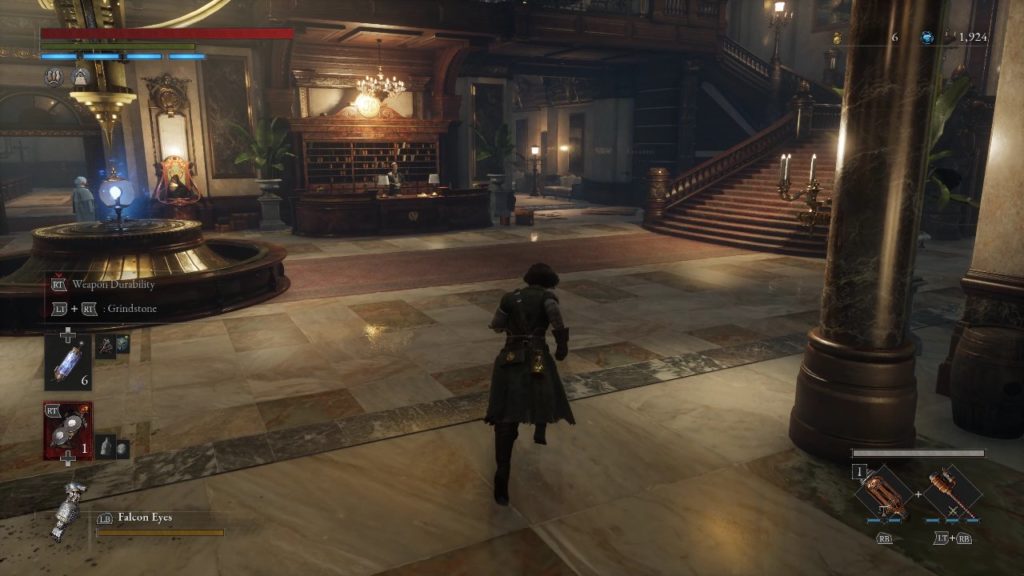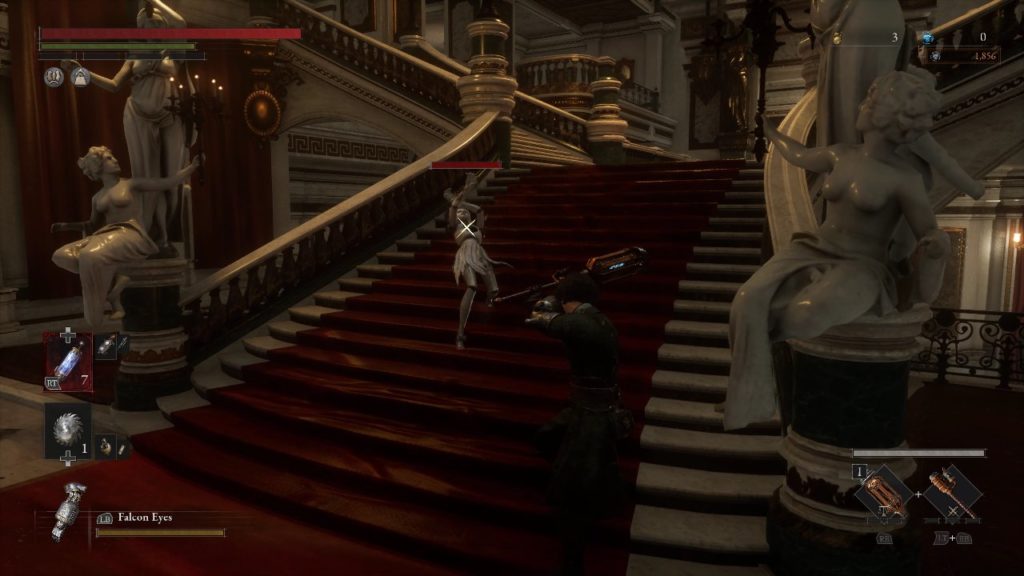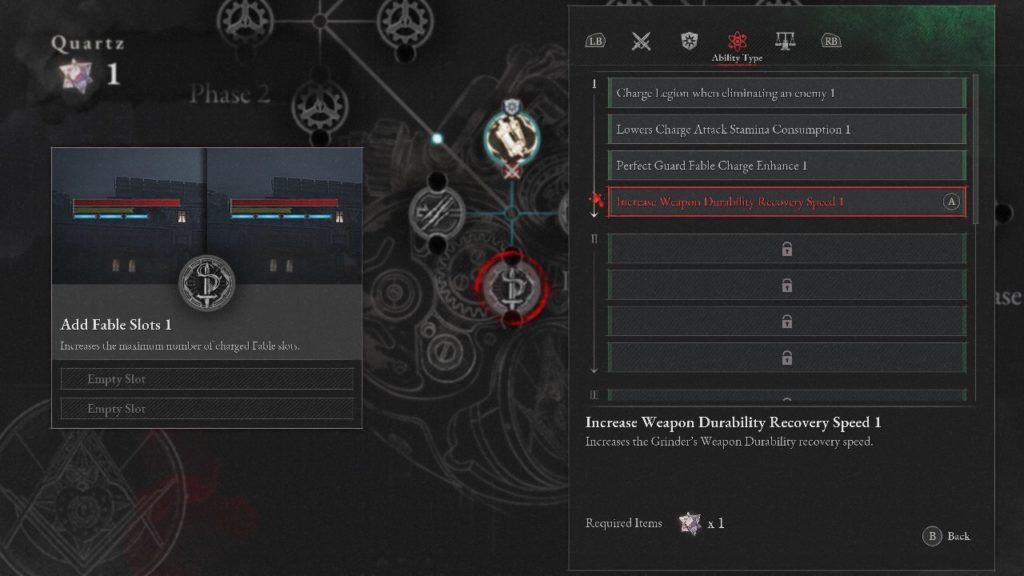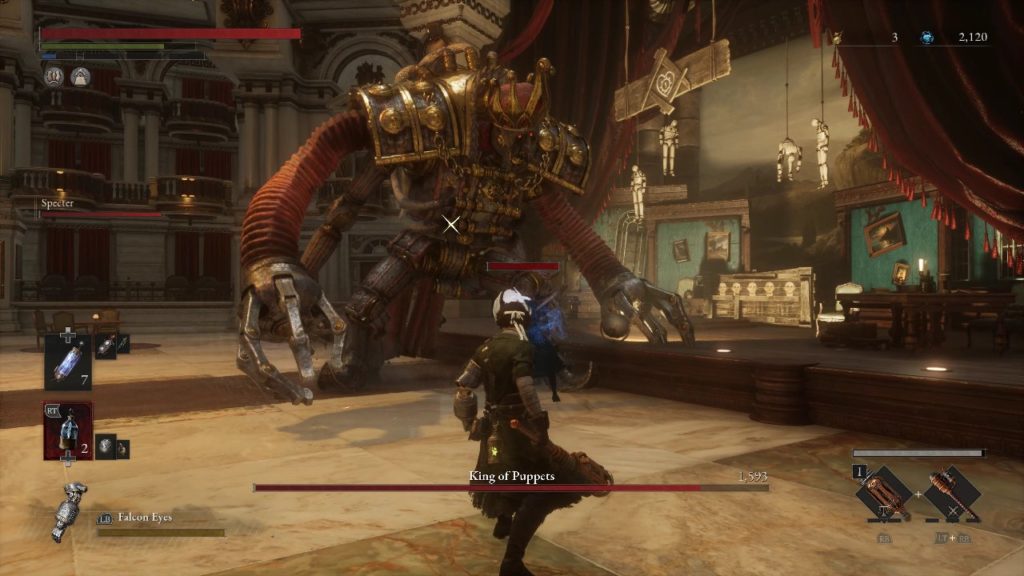Lies of P review
We’ve all told a lie before, right? In fact if you tell me you haven’t, I’ll know you’re lying and it’ll cancel it out anyway. It’s a fundamental part of being a human. Whether you’re telling your best friend that their new baby’s name is totally cool and there aren’t enough babies named Engelbert anyway, or you’re calling a banana a female aardvark just for fun, sooner or later you’re going to lie – it’s a simple fact of life. And this is the philosophy behind Lies of P, the new Soulslike from Neowiz and Round8 Games.
It takes place in the city of Krat, a fictional amalgam of several European cities circa the late 18th to early 19th century. It’s a place of staggering technological advancement, where alchemists have discovered the power of Ergo, a substance that can give artificial life to puppets as well as power any number of scientific marvels. As predictably as the sunrise, this reckless invention has backfired. The puppets have become afflicted with the Frenzy and turned on humanity in brutal fashion. And meanwhile humanity itself is in the grip of the Petrification Disease, which slowly turns them to stone while robbing them of life.

You play as the titular P, otherwise known to you or me as Pinocchio, a unique puppet invented by Gepetto, one of the Founders of the Workshop Union and the genius behind Ergo. Your quest is to find out the truth behind the Petrification Disease and the Frenzy, while doing your best to pass as human when out in the world.
As a setting for a Soulslike it’s both unique and inventive. There’s a genuine narrative to follow, too, with a few twists in the tale, interesting, flawed characters, and some very decent writing despite one or two localisation hiccups in the flavour text. Where most Soulslikes are deliberately obtuse to the point of frustration, Lies of P tells its story in the game, through cutscenes and dialogue, while you can seek out extra lore should you want to – and there’s plenty of it.
Lying is at the centre of everything. Krat is a city of death, ravaged by fire and violence. There are bloodied bodies everywhere, and humans in animal masks roam the city as Stalkers, eliminating puppets where they find them. As P, you can blend in, but you’re often given dialogue choices wherein you can choose to be honest or lie. This has a subtle effect on both the world state and P, as lying bolsters a hidden mechanic called Humanity. The more human you appear, the more NPCs will open up to you, particularly Spring, the cat who roams the halls of the hub, Hotel Krat. You can eventually pet Spring, but it will take a lot of lying to get there.

The city itself makes for a fantastic game world. On the surface it reminds me of both Steelrising and Bloodborne. But while it vastly outshines the former in terms of variety and creativity, it doesn’t quite possess the same sense of ever-present dread of the latter. Make no mistake though, Lies of P is the closest thing to a Bloodborne sequel you’ll play this year. Each of Krat’s environments has a wonderful flow to it, with side roads and hidden paths linked by multiple shortcuts. From the burnt wreckage of Elysion Boulevard to the gaudy beauty of the Krat Opera House or the horrors of Midnight Town and the Cathedral, where the Petrification Disease has reanimated corpses known as Carcasses, beasts that most closely resemble the clickers from The Last of Us, Krat is a terrifying, nightmarish place.
But P has many allies. The few remaining sane puppets and surviving humans hide in the relative safety of Hotel Krat, including Geppetto himself, and the eccentric inventor and showman Venigni, who provides P with the tools to survive Krat and unlock its many secrets. It’s here that you’ll come to level up, upgrade P’s weapons, gear, and skills, listen to the records you’ve found, or uncover the story of the doomed city.
P has a variety of weapons, many of which can be disassembled and reforged by Eugenie in the Hotel. While there are special weapons that cannot be changed, the vast majority have two parts, blade and handle. Each part possesses its own Fable Art and by mixing the components you can outfit P with different special attacks, buffs, and abilities. For example, many of the weapons imbued with an element (Fire, Electricity, or Acid) are fairly weak physically, but you can improve their base stats by putting them on heavier handles. You can also modify the handle with Cranks that boost a specific attribute. Motivity, Technique, and Advance are the primary attributes, and each weapon scales differently with these stats.

There are no shields or guns, but P is also equipped with a Legion Arm, a mechanical left arm that can have a variety of attachments when you find the items to make them. There’s a grapple that can pull enemies to you, a flamethrower, a device to lay explosive mines, even a long range cannon that fires explosive rounds. The Legion Arm is powered by magazines you’ll find, and can be upgraded by Venigni. It’s an invaluable tool for both exploration and combat, but unlike Steelrising, Lies of P is no MetroidVania, you won’t be unlocking new areas using tools and gear.
Instead, the narrative is fairly linear, moving you forward from boss fight to boss fight with lengthy areas in between that are filled to the brim with items to find, side paths to explore, NPCs to meet and help, and secrets. This game loves its secrets, from treasure hunts to riddles to solve (there’s literally an NPC like the Riddler who will ring special phones and give P conundrums to solve for rewards). Even the emotes you unlock can trigger small events and improve your Humanity. By resting at devices called Stargazers you can fast travel, change your gear, and respawn common enemies in the area. You even have a magic pocketwatch that can return you to a Stargazer without costing you Ergo.
Combat is based on timed parries and dodges. Stamina management is crucial, but Lies of P rewards courage and good timing. Blocking drains health and stamina, though you can regain that health by counter-attacking. Perfect parries, however, don’t take your health, and build up a hidden stagger metre on the opponent. When their health bar glows white, a charged attack will stagger them, allowing you to follow up with a vicious flurry of blows. This is especially effective against bosses, and is often the only way to wear down their huge health pools.

Minibosses in particular are damage sponges, and if you don’t learn to parry and time your Fable Arts well, you won’t survive. Costumes are cosmetic, and all of P’s defence attributes come from mechanical parts you find around the city, which boost protection against specific damage, status, and element types. Enemies are well spread, and you won’t often get overwhelmed by grunts if you take your time and learn to master your chosen weapon and Legion device. Fable Arts can turn the tide of a fight, too.
The story bosses in Lies of P are often a sight to behold, and one or two of them challenged me more than any Soulslike bosses I’ve faced before outside of maybe a few in Elden Ring. Some have multiple phases, and can be so relentlessly aggressive that if you aren’t nailing the distance, timing, and parrying you’ll be taken apart in a few hits. From massive mechanical monstrosities like Parade Master and Scrapped Watchman, to brutal behemoths like Fallen Archbishop Andreus, or even human Stalkers, fast, small, and nimble, the bosses are varied, inventive, and always genuinely hard in ways that go beyond just having a lot of health.

They have a huge array of attacks and counters of their own, including wipe moves, and you might have several attempts before you’ve seen everything a given boss can do. One in particular had me ready to give up and walk away before I found its weakness almost by accident. In every story boss encounter you can summon an Ergo Spectre to help you, and while they don’t do an awful lot of damage and certainly can’t take much, they can be the difference you need when they occupy the boss’s attention for a while. You can unlock a device around halfway through the story that lets you boost them during combat, too.
Bosses drop special Ergo that you can exchange for unique weapons, while minibosses and puzzles often reward Quartz. This material is used to power the P-Organ (again, a localisation department should have really interfered with some of the names here), which grants P permanent upgrades such as extra Pulse Cells (this game’s equivalent of Blood Vials), more Fable energy, extra belt slots, or increased healing and Legion refills. You’ll need multiple Quartz to power each node, and everytime you slot a piece you unlock a persistent buff from a long list. These buffs increase things like stagger damage, parry window, or Fable recharge, etc. There may be build potential, but the ability to respec skills and gear upgrades comes very, very late in the game.
Lies of P is, by any metric, exceptional. The sound design, music and voice work are all fantastic – particularly some of the records you can play in the Hotel. It also looks amazing. I was able to run it with high settings on my modest PC and it held a pretty stable 60fps, though some areas with a lot of water and fire effects did pull that down a little. It runs very well on Steam Deck, too, even on medium settings and locked to 60fps, and looks fantastic on PS5. There is some weird flashing now and then, though, which will likely be optimised out after launch. My only frustrations have come from sudden difficulty spikes – and not from the story bosses. You expect them to be obstacles and some very much are. It’s more from minibosses who appear without much warning and have insane attack and defense values. There’s one in particular that was so fast and aggressive I wondered for a moment if it was even possible to defeat. Until I defeated it, of course.
Occasionally, Lies of P falls victim to the usual Soulsborne trap of not explaining all of its mechanics. But there’s so much atmosphere, story, personality, and creativity in it that it’s hard to mind too much. Its obtuseness might put off newcomers a little, but then this is not a game built to be anyone’s first Soulslike. It’s incredibly hard at times, but veterans of the genre will fall in love with every aspect of it. Lies of P is a staggering achievement for Neowiz, and one of the very best “non-FromSoft” Soulslikes I’ve ever played.




